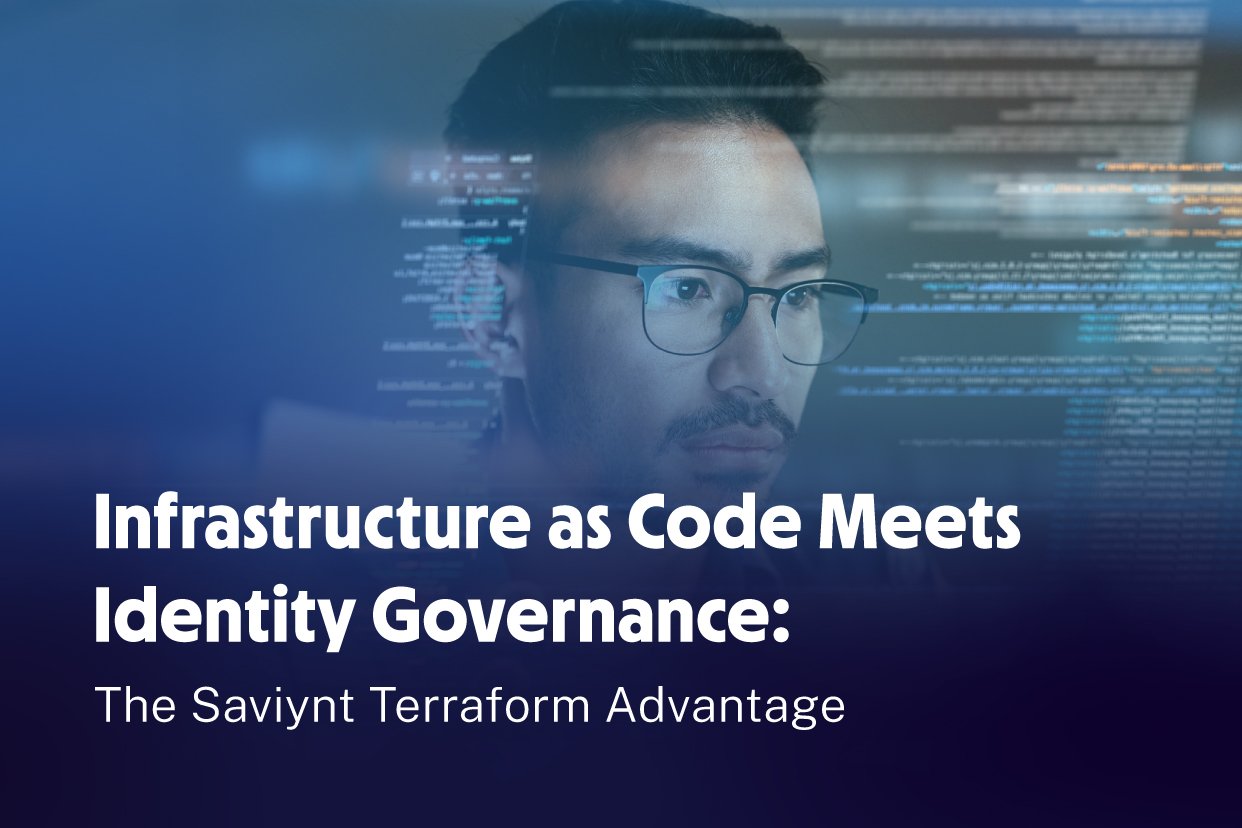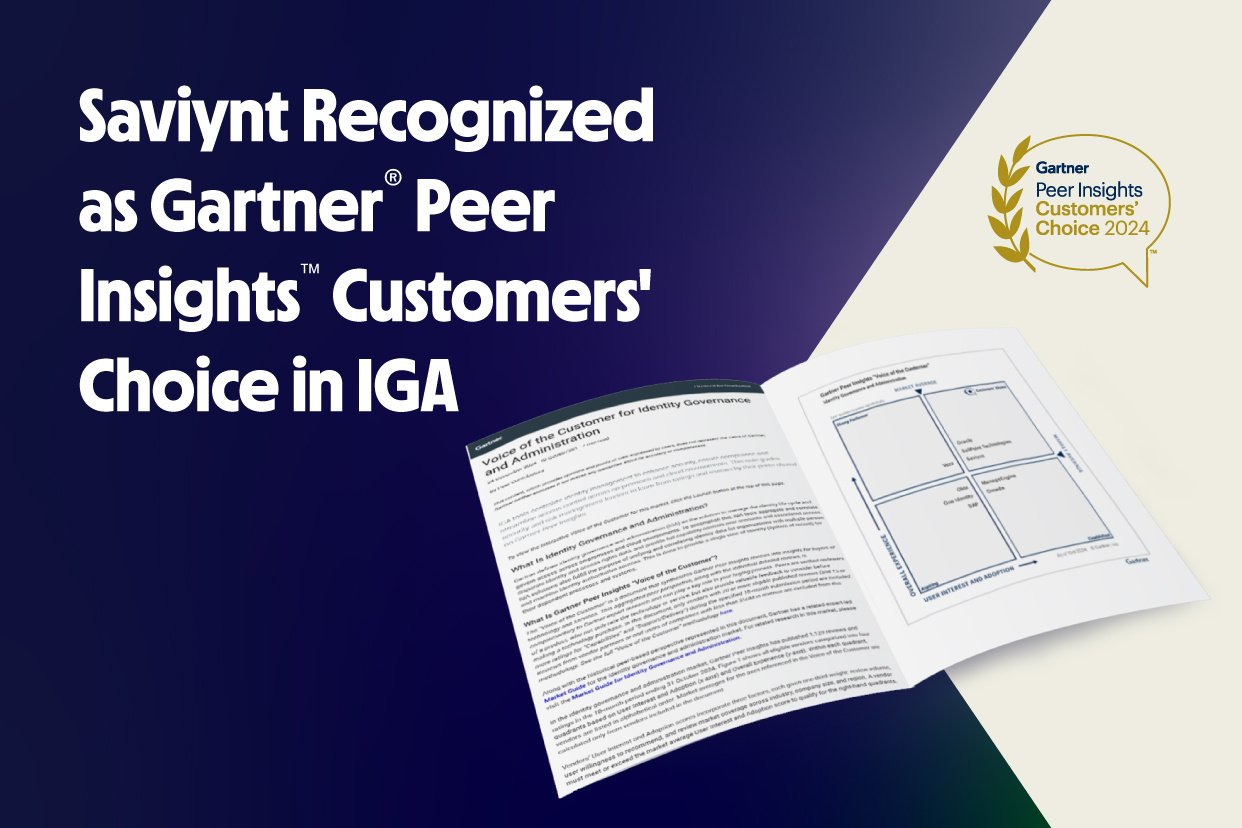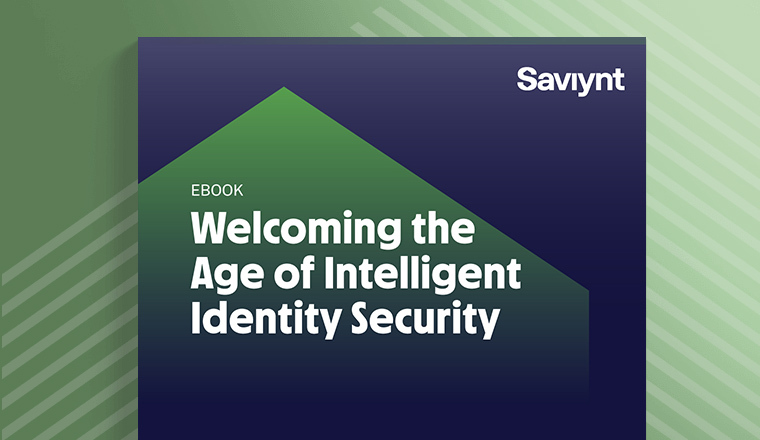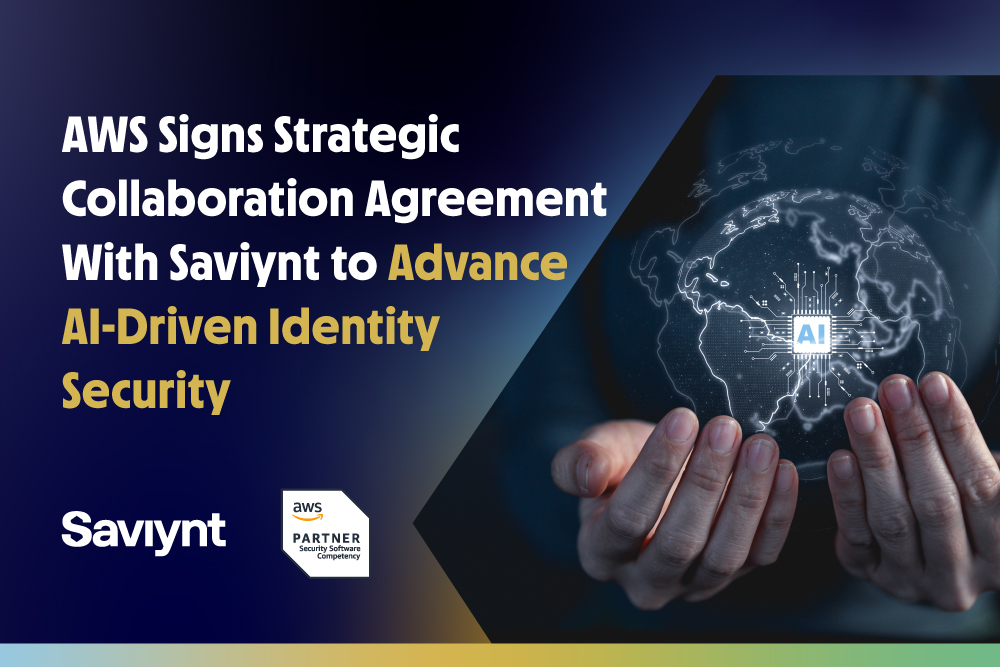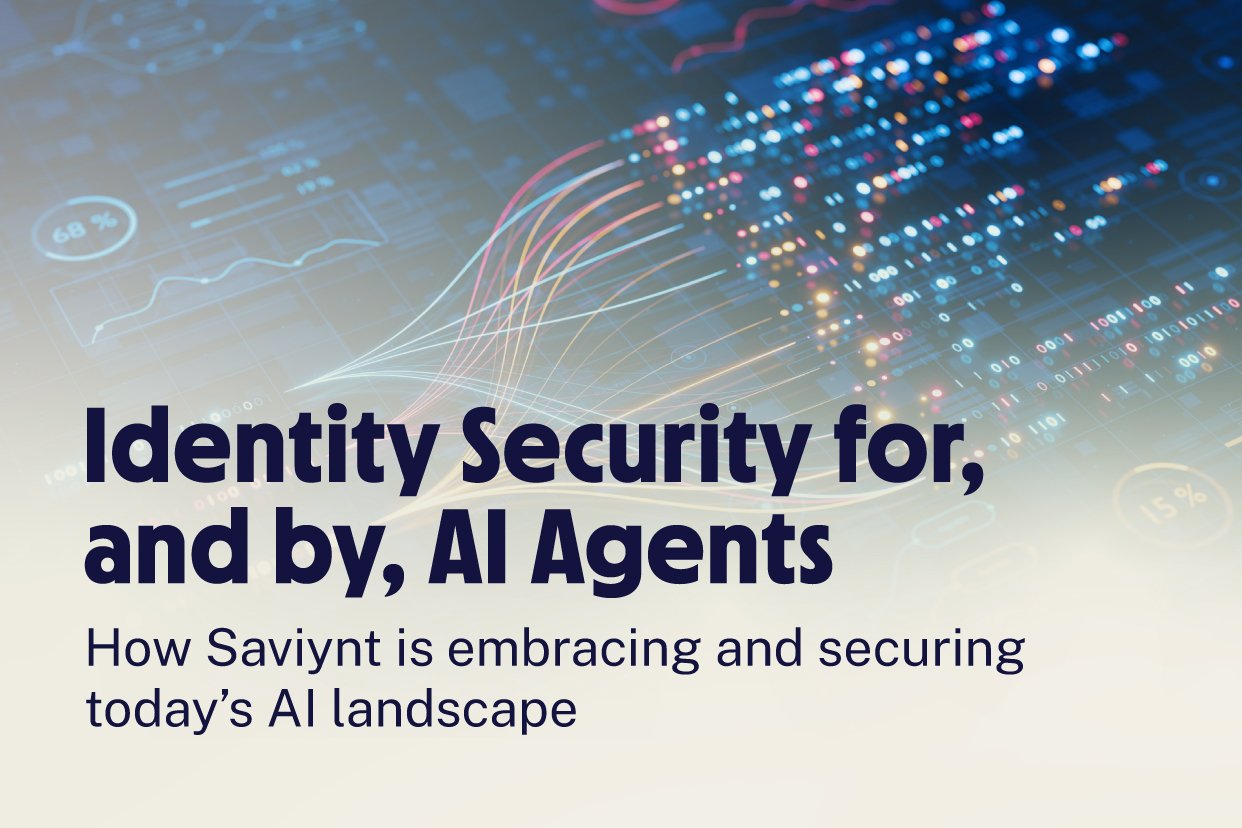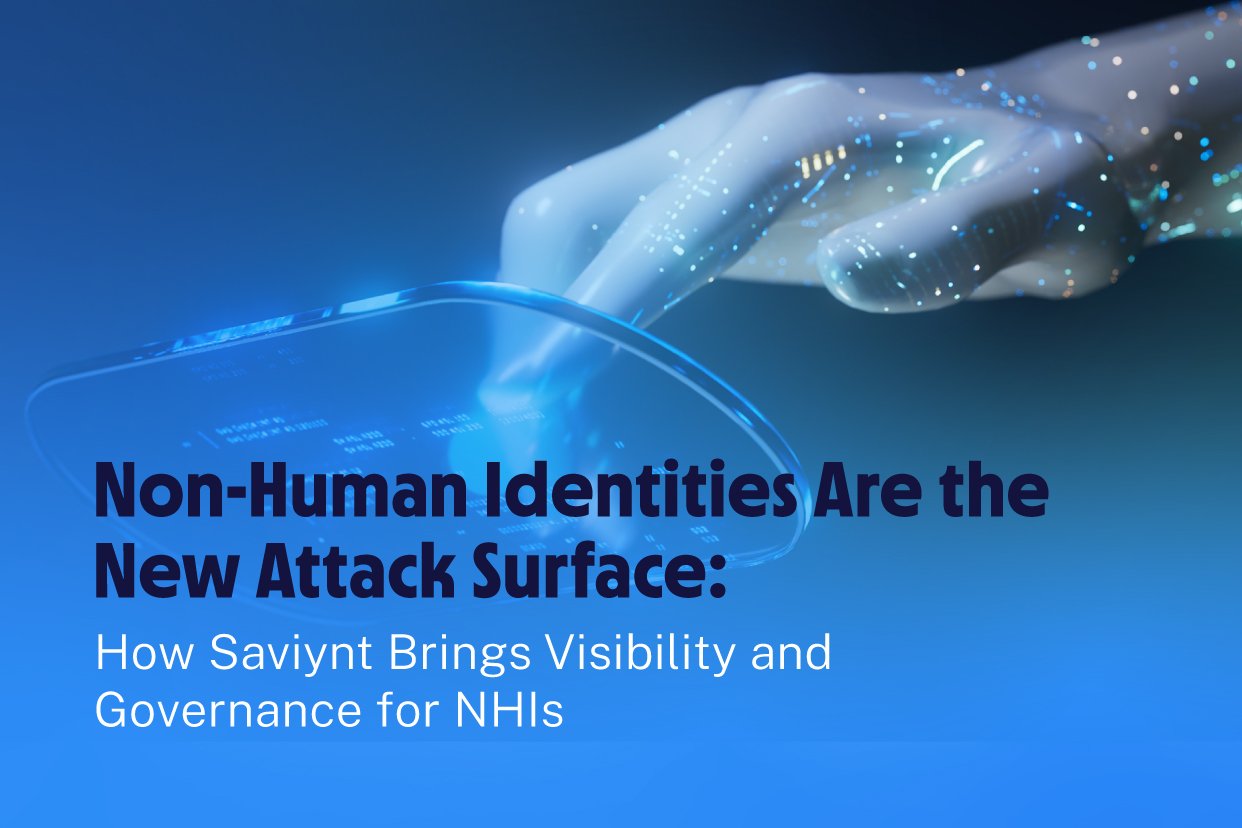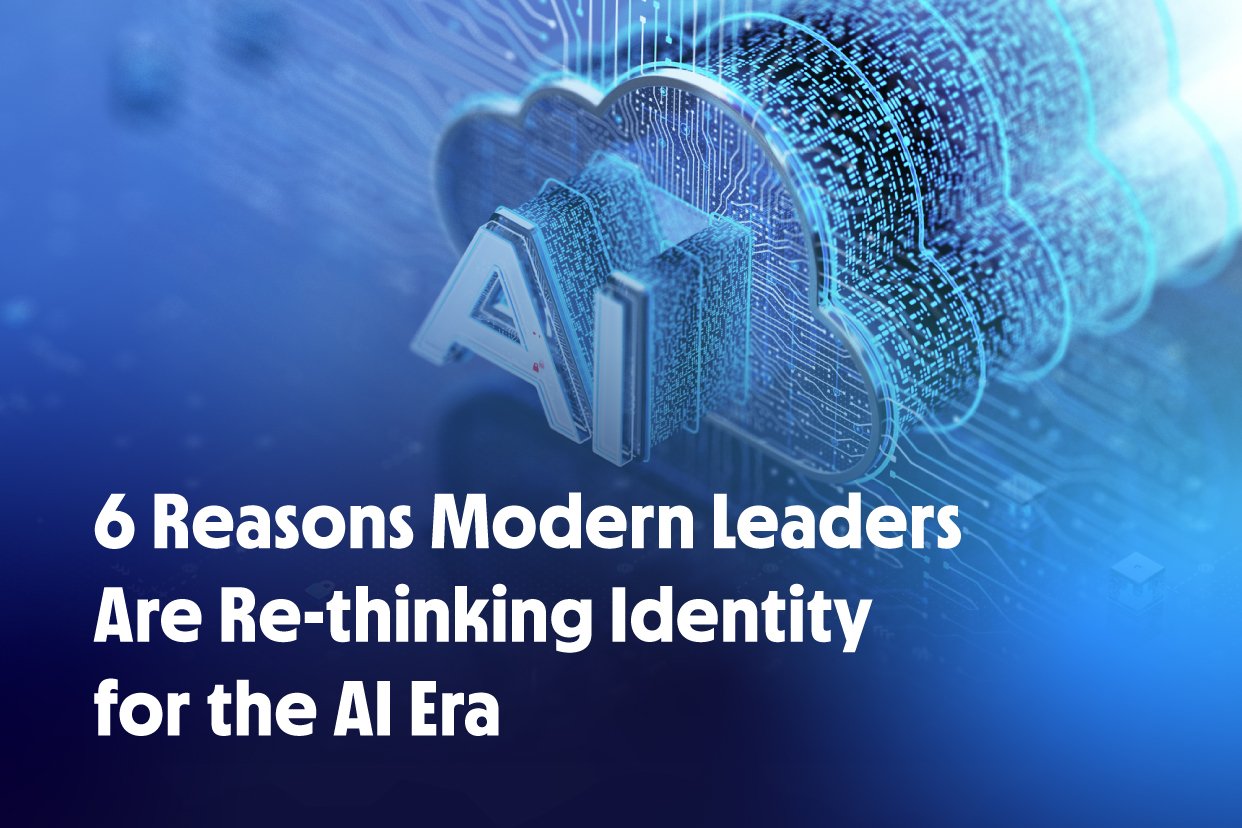Bridging the Gap Between DevOps and Identity Security with Saviynt Terraform Provider
Organizations today are increasingly adopting infrastructure as code (IaC) to manage their cloud and security configurations, aligning with modern DevOps practices that emphasize automation, consistency, and scalability. As part of this evolution, identity governance must integrate seamlessly into these automated workflows. The Saviynt Terraform Provider represents a significant step forward in bringing identity governance into the same automated workflows that teams use for infrastructure management.
The Modern DevOps Imperative
Terraform is an open-source infrastructure as code tool that allows organizations to define and manage infrastructure through code. While traditionally used to manage cloud platforms like AWS, Azure, and GCP, Terraform now enables customers to manage Saviynt Identity Cloud objects as code, bringing standardization, scalability, and automation to identity governance.
The shift toward infrastructure as code isn't just a technical preference—it's a business imperative. And now, organizations can use IaC capabilities to manage their identity security implementation and program. This approach transforms identity management from a manual, error-prone process into a streamlined, automated workflow.
Core Benefits of the Saviynt Terraform Provider
The Saviynt Terraform Provider delivers several critical advantages that align with modern operational excellence principles:
Scalability and Repeatability: Define configurations once and deploy them consistently across any environment. Complex identity environments can be managed and scaled with ease, eliminating the traditional bottlenecks associated with manual configuration.
Automation and Error Reduction: By automating deployment processes, organizations significantly reduce manual errors while accelerating time-to-value. Instead of manually configuring settings or scripting APIs, teams can quickly onboard or update Saviynt Identity Cloud artifacts through code.
Auditability and Version Control: All changes are tracked in version control systems, providing complete visibility into who made what changes and when. This creates a comprehensive audit trail that's essential for compliance and governance.
Drift Detection and State Management: Terraform's built-in state management tracks the current state of your infrastructure and identifies configuration drifts, enabling safer and more controlled deployments. Teams can see exactly what's changed before making updates.
Comparing Management Approaches
When evaluating identity infrastructure management options, three primary approaches emerge:
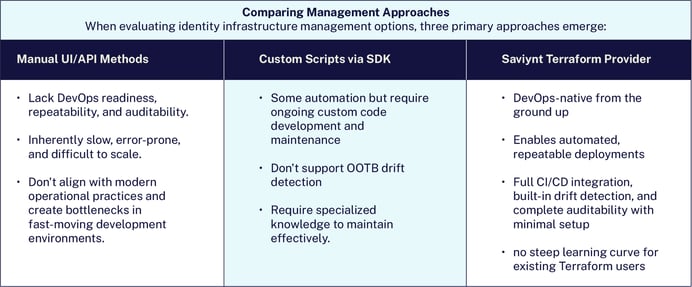
The Saviynt Terraform Provider excels in several key scenarios that address common organizational challenges.
Application Onboarding Without the Back-and-Forth: Traditional application onboarding involves extensive coordination between Application Teams and Identity Security Teams. With the Terraform Provider, application teams can submit details through standardized discovery questionnaires that are translated into Terraform scripts for autonomous execution. This enables both teams to operate independently yet synchronously, driving efficiency and accelerating time-to-onboard.
Safe Change Propagation via Update Pipelines: Production environments require careful change management. The Terraform Provider enables organizations to establish update pipelines that manage application changes through well-defined software development lifecycle (SDLC) processes. All changes are tested, reviewed, and validated before deployment, enhancing control while reducing risk and ensuring consistency across environments.
Seamless Environment Promotion: Stage-specific configuration becomes straightforward with Terraform. Application onboarding can begin in development or staging environments, with validated configurations seamlessly promoted to production using identical Terraform scripts. This eliminates manual configuration updates, prevents drift, and eliminates deployment surprises.
Moving Forward
The Saviynt Terraform Provider offers a composable, low-friction approach to managing application onboarding across teams and environments. Through pipelines, templates, and configuration promotion patterns, organizations can transition from reactive onboarding processes to proactive lifecycle management. For organizations onboarding numerous applications, the Terraform Provider significantly reduces manual effort while accelerating time-to-value.
Now available on the Terraform Registry, Saviynt Terraform Provider enables organizations to immediately begin integrating identity governance into their existing infrastructure as code workflows. This integration represents a fundamental shift toward treating identity infrastructure with the same rigor and automation applied to cloud infrastructure, ultimately delivering better security outcomes with greater operational efficiency. For more information about Saviynt's advanced onboarding capabilities, click here.
